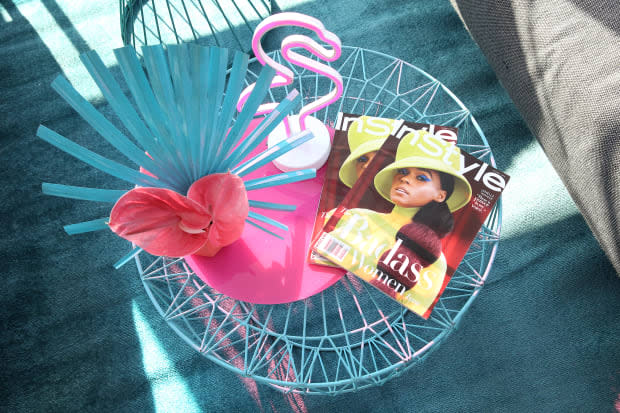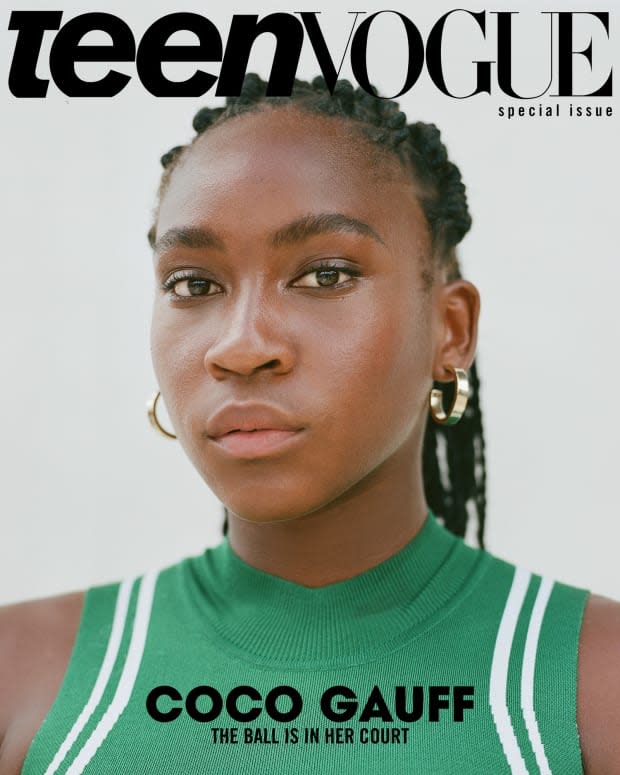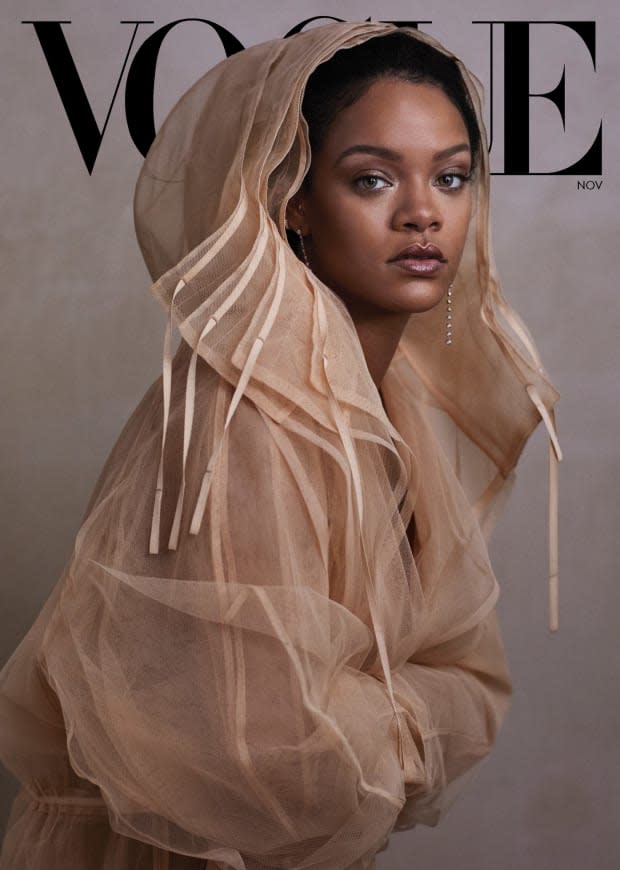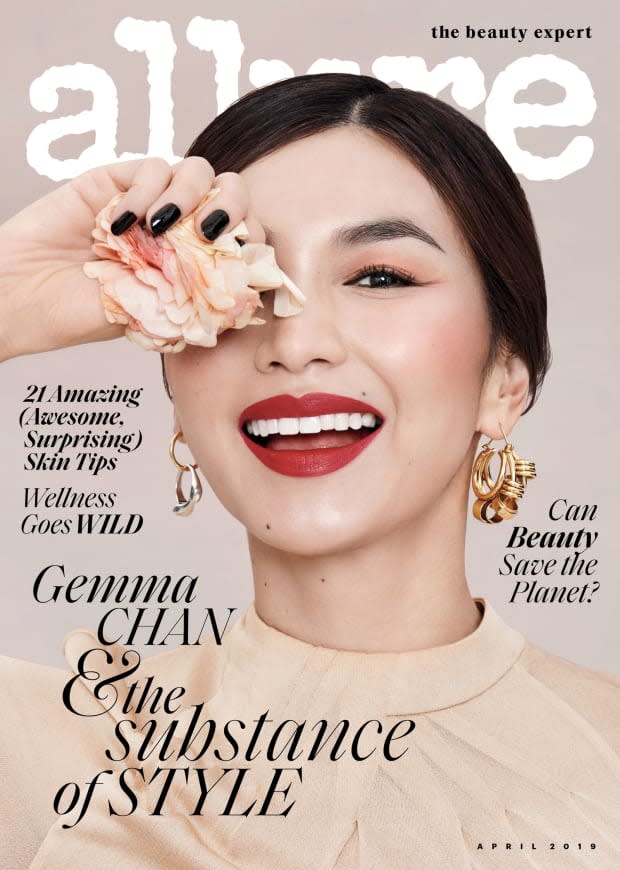What Does Diversity in Magazines Mean in 2019?
As the media landscape shifts, so does the way a magazine cover looks. Here's how that can translate into inclusivity and visibility.

Usually, every year, we take a look at the year's newsstands to chart how well (or not well) the leading U.S. fashion magazines fared in the diversity and inclusion department. This time we thought we'd do things a little differently considering, well, magazines and the general landscape of media is a little different — okay, a lot different.
A handful of magazines have ceased producing print issues. Digital covers are more ubiquitous than ever. A number of publications now release multiple monthly covers featuring different stars (Elle, for example, came out with 25 covers this year alone). Given the changes in the industry, we thought we'd examine how the shifts in the industry have influenced diversity in magazines in 2019, if at all.
Let's start with the numbers. Last year, out of the 10 major U.S. titles — Allure, Cosmopolitan, Elle, Glamour, Teen Vogue, Vogue, W, Marie Claire, InStyle, and Harper's Bazaar — we found that 62 of 128 covers (48.4%) starred people of color. In 2019, that number has decreased slightly to 70 of 163 covers (42.9%). Marie Claire and Teen Vogue had the most diversity on its covers, with 11 of 17 (64.7%) and 12 of 21 (57%), respectively, featuring people of color. InStyle, which saw the most diversity last year, is in the bottom three, with five out of 16 of its covers (31%) featuring a person of color; Vogue is at 33% and Elle is at 28%.
But today, there are more variables to consider than there were in the past. For instance, this year saw a record number of covers produced: 163 compared to 2018's 128 and 2017's 153. There were four months in which Elle released multiple covers; there were three for Marie Claire. W released seven different covers for its Hollywood issue and Glamour released eight for its Women of the Year edition. Many covers also featured a group of models or celebrities which, more often than not, included people of color.
Then, there are the "special issues," which aren't necessarily tied to a specific month but are more common nowadays. Allure and Teen Vogue both released their own versions of this year. These are, presumably, the ones slotted in between the covers that require more advance planning — Tracee Ellis Ross' for Allure was released digitally in November, tied to the announcement of her new hairline (and in partnership with Ulta); Teen Vogue's "special issues" featuring Coco Gauff and Greta Thunberg were put out following both of their ascents into the public consciousness.

Special issues and digital covers seem to hold particular significance in this new age. They're still a heavy lift for editors, but they allow for more flexibility and often provide a wider selection when it comes to casting. It allows room for different faces.
Related Articles
Elle Germany Did Literally Everything Wrong in This Attempt to Highlight Black Models
The 32 Most Memorable Magazine Covers of 2018
Diversity on Magazine Covers Increased by a Record Double-Digit Percentage in 2018
Even though this year saw a number of familiar celebrities getting repeat covers — Lady Gaga on Allure and Elle, Taylor Swift on Vogue and Elle, Angelina Jolie on Elle and Harper's Bazaar, Serena Williams on Allure, Teen Vogue and Harper's Bazaar — there were some welcome newcomers getting the coveted spot. Naomi Osaka covered Allure, Normani Cosmopolitan, and Lil Nas X Teen Vogue.
That's not to say the approach to picking cover stars is necessarily different. Teen Vogue's Lindsay Peoples Wagner says the process hasn't changed from the past, but she notes that the power dynamics have shifted. "20 years ago, celebrities needed magazine covers, but now because of social media they don't and they have other outlets to be able to control the narrative," she says. "Some celebrities are evergreen and always do well, but just because someone has a big Instagram following doesn't mean the cover will do well."
And perhaps another thing that's changed is who we, as a society, are paying attention to. Vogue's Anna Wintour tells us that, similar to Teen Vogue, the publication picks their subjects in the same way they always have; the choice often comes down to who people are talking about.
"It is still a question of relevance — who is driving conversation and who are we excited about — but also one of values: What does this person stand for? Subjects who have real stories to tell, who are taking chances, or putting themselves on the line in some way are ideal subjects for a cover," Wintour says. "Inclusivity is critical to this effort. We want to reflect the culture — all of it."

When you broaden the scope to look at independent magazines, though, it seems like they're the ones that are most in-tune with the changing culture. Paper put Colin Kaepernick, Megan Thee Stallion and Teddy Quinlivan on covers this year. Interview gave spotlights to RuPaul and Rihanna. The Face — which only relaunched this past September — has already had Tyler the Creator, Rosalía, Naira Marley and Alexa Demie front its issues.
As Business of Fashion reported back in October, "the market for niche fashion magazines — high-concept biannuals and quarterlies that rely on expensive print issues sent to in-the-know subscribers or sold in specialty stores — is more crowded than ever." And with this new wave has come fresh perspectives and a willingness to take risks (something more mainstream magazines might be more resistant to).
Of course, you can't always judge a magazine's overall diversity solely by its cover. There are other factors that require analyzing, too. As Allure's Michelle Lee notes: "Diversity and representation is core to everything we do at Allure, which includes covers but has to extend to every decision we make whether we're choosing models for an eyeliner shoot or choosing a universal shade of lipstick that looks good on any skin tone or talking about hair texture."
Wagner shares a similar sentiment when it comes to casting, picking stories and hiring talent at Teen Vogue. "It's an integral part of storytelling to share the stories of all different kinds of people, so it's much bigger than just having that moment on a cover, but also who's hired behind the scenes, who are we writing about for the rest of the month, and a holistic point of view for us always," she says.
The people who you bring on to produce a cover story — the photographers, makeup artists, hairstylists, editors and writers — can be just as important. Lee says that she's worked with writers of color, like Ashley C. Ford and Baze Mpinja, for cover stories on Serena Williams, Anne Hathaway and Adut Akech; an on-staff editor, Jessica Chia, was also selected to write the piece accompanying Gemma Chan because, as an Asian-Latina, Lee notes, she "had strong personal feelings about seeing this new wave of Asian representation onscreen."

Of course, there are a lot of things to consider when selecting who's going to write cover stories. Wagner says that who's chosen often has a lot to do with the talent. "I think it depends on who they're comfortable with, someone we think aligns with the brand and will speak to our reader in a way that isn't too highbrow," she explains. But it is worth mentioning that none of Vogue's cover stories were written by people of color this year — perhaps proof that an inclusive staff and writer's room holds importance in which stories are chosen to be told.
As exhaustive as the conversation has been surrounding diversity in fashion, it's still a necessary one — especially given how slow progress has been. Although the numbers for magazine covers with people of color on them are slightly down, it's an improvement from the many years prior.
The hope going forward is that diversity and inclusion becomes the norm and not box editors feel like they need to check off or "some sort of quantifiable quota," as Lee puts it. She gives an example: "We just shot a nail art story and included a male model as one of the hand models. We didn't separate it into a story about men doing nail art — it's just part of a larger shoot and treated like another hand. I really believe this is where diversity is — and should be — going."
The influence and relevance of magazines have come into question over the years, but as we've outlined before, covers themselves are still important. They remain something celebrities covet and strive for, and the visibility they bring with them is still significant — no matter the format.
Never miss the latest fashion industry news. Sign up for the Fashionista daily newsletter.
